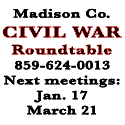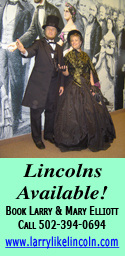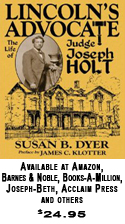|
 Tax, borrow, print; three ways used Tax, borrow, print; three ways used
by both sides to finance Civil War
There are only three ways to finance a great war, a prominent business-economic history journalist states.
A government can tax, it can borrow and it can print and the Union and Confederate governments did all three during the Civil War, John Steele Gordon points out. But the particular mix of each turned out to be fundamentally important to the outcome of the war, he continues. “Washington immediately raised taxes,” Gordon notes. “Before the war, the federal government had relied principally on the tariff for revenue. But the South, dependent on manufactures imported from elsewhere, had always fought for the lowest possible tariff. With the South out of the Union, the tariff reached unprecedented heights, not only producing revenue, but protecting Northern industries that were prospering as never before, thanks to the conflict.
“The government also began to tax legal documents, gross receipts, liquor, advertising and even income. In August 1861, a graduated income tax, starting at three percent on incomes exceeding $800 a year (a middle-class income at the time) and rising to five percent on those over $10,000, was instituted. In 1864, the upper rate was doubled, to 10 percent.
“Altogether, the federal government was able to get 21 percent of its revenue from taxation. The South, with its less developed and cash-poor agricultural economy, was able to raise only six percent that way.”
Two-thirds of federal government revenue came from bond sales, Gordon relates, throwing most of the cost of the war onto the future. In 1860, the national debt had amounted to a relatively paltry $64 million. By 1866, it was $2.68 billion, a 40-fold increase.
Jay Cooke, a Philadelphia banker, devised the bond drive – a feature of every major war since – selling war bonds directly to the people and bypassing the banks that had bought most federal debt until then. Bonds could be bought in denominations as small as $50 and paid for in installments.
“In all, Cooke sold bonds to about five percent of the Northern population, an astonishing figure when one considers that fewer than one percent of Americans then had bank accounts,” Gordon writes. “The effect on Wall Street of this vast upsurge in the number of securities holders would be profound.
“The Confederacy, with a small middle class, few banks and an illiquid economy, could raise only about 40 percent of its revenue from bonds (all of which, of course, became worthless at war’s end, devastating the South’s supply of capital for generations).
“While the U.S. raised about 88 percent of its war costs through taxes and borrowing, the Confederacy could raise only about 46 percent in this way. To make up the rest, both sides resorted to the printing press.
“The North issued about $450 million in greenbacks, so named because of the color of the ink used on the reverse. Greenbacks could not be used to pay taxes or be converted into gold at a set ratio. (Instead the ratio was determined by speculators on Wall Street. It tended to vary, based on Union fortunes on the battlefield.) As fiat money always does, it set off a considerable inflation. But at about 180 percent of antebellum prices by 1865, the inflation was manageable in the North.
“It was a different story in the South. The Confederacy printed fiat money to cover more than half its expenses. Worse, because its paper mills were primitive, counterfeiting was easy and rampant. The result was a 700 percent inflation rate in the Civil War’s first two years and a rate exceeding 9,000 percent by its end. Hoarding, shortages and black markets spread relentlessly. Manufacturers were less and less willing to accept Confederate money in payment for goods. By the end of the war, Lee’s Army of Northern Virginia was out of food, out of supplies and out of alternatives to surrender.”
Gordon quotes, in summary, a Chinese saying – “Wars are fought with silver bullets.”
“In other words, the side with the greater financial resources usually wins,” he concludes.
*****
John Steele Gordon
John Steele Gordon was born and raised in New York City. He attended Millbrook School and Vanderbilt University, graduating with a B.A. in history in 1966. He has been writing on business and economic history for over 25 years. He is the author of seven books. Among them are The Scarlet Woman of Wall Street, a history of Wall Street in the 1860s; Hamilton’s Blessing, a history of the national Debt; The Great Game, A history of Wall Street; A Thread Across the Ocean, the story of the laying of the Atlantic cable; and An Empire of Wealth, a history of the American economy. He also has written for numerous publications, including Forbes, Forbes ASAP, Worth, the American, National Review, Commentary, and the Weekly Standard. He wrote “The Business of America” column for American Heritage for 18 years (many of the columns were collected into a book of that name published in 2001). He currently writes a column on business history for Barron’s called “The Long View.” He writes frequent book reviews for the New York Times and the Wall Street Journal, where he also contributes frequent op-ed articles.
|













